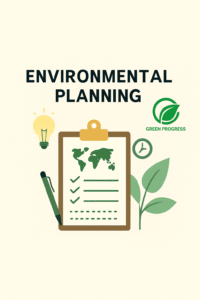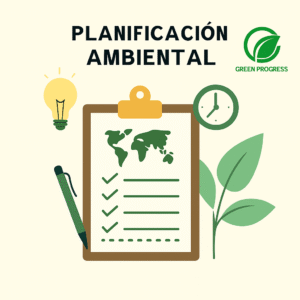What Is an Environmental Impact Assessment (EIA) and Why Is It Important?
An Environmental Impact Assessment (EIA) is a formal process to identify, predict, evaluate, and mitigate potential environmental, social, and economic effects of a proposed project before any major decision is made. It ensures decision-makers consider environmental consequences rather than focusing solely on costs or short-term gains. EIAs promote responsible development, transparency, and the well being of impacted communities.
When Is an EIA Required? Understanding Schedule I and II Projects
EIAs are required depending on legal thresholds or impact significance. Schedule I projects (e.g. large-scale industrial, mining, infrastructure) almost always need a full EIA. Schedule II projects trigger an EIA only if they could have significant environmental effects. Screening typically follows national regulations to determine whether full assessment is required.
Step 1: Screening – Determining If an EIA Is Needed
In the Screening phase, you evaluate whether the proposed project is likely to have significant impacts and therefore needs an EIA. It’s a rapid assessment based on project size, location, legal classification, and preliminary evidence of potential harm. If there is potential for significant effects, a full EIA is required; otherwise an Environmental Management Plan (EMP) may suffice.
Step 2: Scoping – Defining the Scope of the Study
Scoping sets clear boundaries: what issues to assess, key receptors (air, water, biodiversity, communities), the geographic and temporal extent, and which project alternatives to compare. It helps avoid unnecessary analysis and ensures focus on critical impacts. Public consultation at this stage ensures transparency and stakeholder input.
Step 3: Baseline Data Collection – Understanding the Environmental Context
Collect baseline data on environmental, social, and economic conditions: climate, hydrology, biodiversity, land use, cultural heritage, local populations, existing pressures. Good baseline data enables accurate predictions, forming reference values for impact magnitude assessment and monitoring later.
Step 4: Selecting the Assessment Methodology
Choose appropriate evaluation tools to analyse cause-effect interactions:
- Leopold Matrix: evaluates interactions between project activities and environmental components.
- Conesa Matrix and Batelle Columbus Method: structured scoring systems.
- Other tools: checklists, network diagrams, Life-Cycle Assessment (LCA), spatial analysis via GIS, Multi-Criteria Analysis (MCA).
Step 5: Environmental Impact Evaluation – Characterizing Effects
This central stage involves:
- Identifying direct, indirect, and cumulative impacts, over construction, operation, and closure phases.
- Assessing each impact’s nature (positive/negative), magnitude, duration, probability, spatial extent, and significance.
These are grounded in baseline conditions and often follow standardized frameworks used by international organizations and development banks.
Step 6: Preparing the Environmental Impact Statement (EIS) and Environmental Management Plan (EMP)
The EIS consolidates the project description, environmental baseline, evaluation, alternatives, mitigation measures, and stakeholder input into a structured document. A user‑friendly non‑technical summary should be included to ensure comprehensibility.
The EMP details mitigation strategies, monitoring protocols, responsibilities, contingency plans, budgets, and implementation timelines. It must align closely with the EIS and is mandatory in many jurisdictions.
Step 7: Public Participation and Stakeholder Engagement
Stakeholder consultation ensures affected communities and key groups contribute to project design, evaluation, and mitigation. Methods include public meetings, surveys, focus groups, or online platforms. Documenting feedback and how it influenced project decisions is essential for credibility and legitimacy.
Step 8: Final Decision and Environmental Clearance
Designated authorities review the complete EIS and EMP to decide whether to grant environmental clearance, request modifications, or reject the proposal. The decision must be justified and communicated transparently, often with legal timelines, conditions, or monitoring requirements.
Key Stakeholders and Their Roles in the EIA Process
The EIA process involves a variety of stakeholders:
- Project proponents (developers/consultants) prepare the EIS/EMP.
- Environmental authorities review and license.
- Technical experts and assessors evaluate data and methodologies.
- Local communities, NGOs, and citizens participate in consultations.
- Funding or multilateral institutions may require compliance with internal standards and periodic audits.
International Standards and ISO 14000/14001 in EIA
International norms such as the ISO 14000 series in particular ISO 14001 on environmental management systems reinforce planning, implementation and continual improvement. While not compulsory for EIAs, they strengthen project credibility and align with sustainability goals.
Best Practices and Common Mistakes in EIA
Best Practices:
- Early and meaningful public participation.
- Transparent methodology and documentation.
- Consideration of project alternatives and cumulative impacts.
- High‑quality baseline data and consistent monitoring.
Common Mistakes:
- Poorly defined screening criteria.
- Excluding relevant impacts or community concerns.
- Vague mitigation plans lacking monitoring specifics.
- Use of outdated models or insufficient data.
- Failure to report or communicate findings clearly









